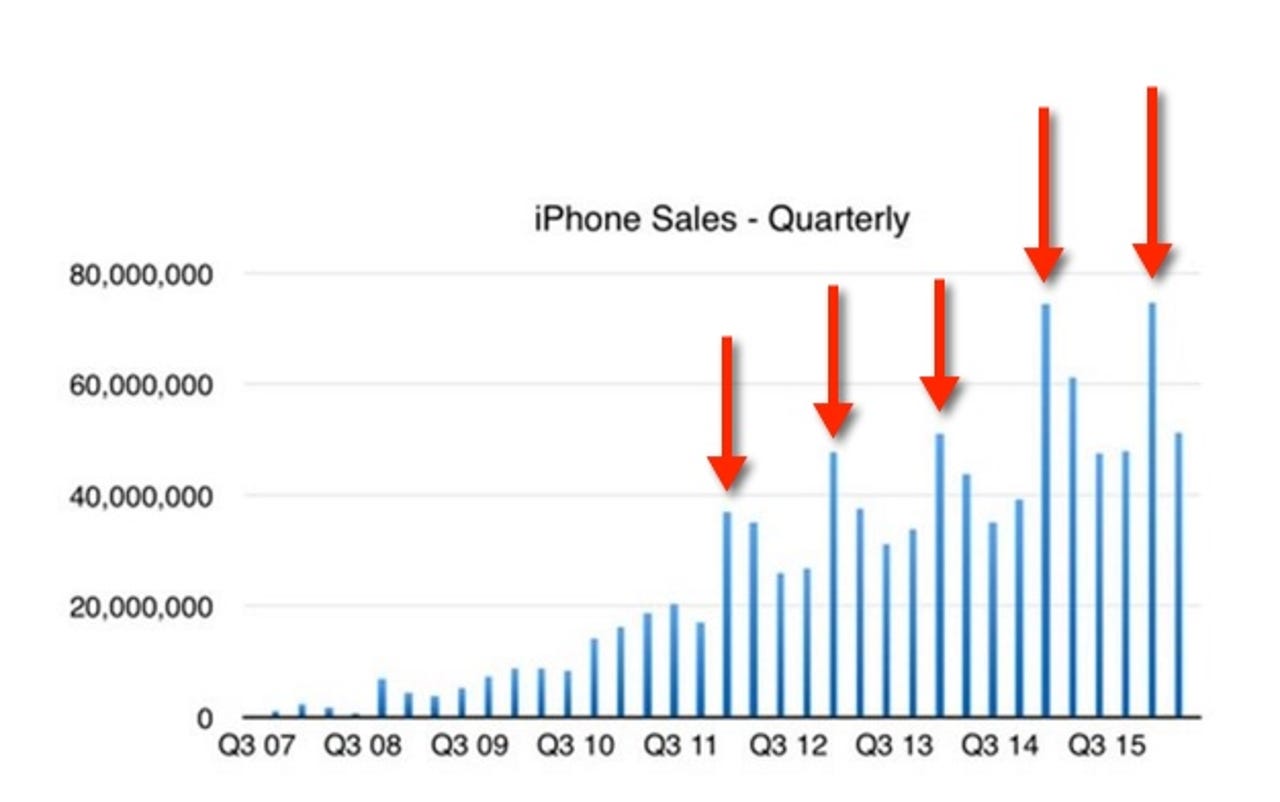A major iPhone release every three years: It could work

Apple currently carries out a major revamp of the iPhone every two years (hence the "iPhone X" and "iPhone XS" releases). However, Nikkei Asian Review is reporting that Apple could be getting ready to switch to a three-year cycle.
What would be the effect of switching to a three-year cycle?
See also: iOS 10: Ten features it needs to stay ahead of Android
According to the report, the reason behind this is down to the smartphone already doing what most people want it to do, and a slowing market is another factor.
Let's think about the possible effect that this could have on iPhone sales.
Well, the most obvious scenario would be that iPhone sales would fall. After all, people love new stuff.
But the data says something different. Here's a chart showing quarterly iPhone sales.

iPhone quarterly sales
Notice something? No. Well, notice how over the past five years how iPhone sales have increased following the release of an updated version, irrespective of whether it was an iPhone X release or an iPhone XS release.
iPhone quarterly sales, peaks labeled with iPhone release
This seems to indicate that people love new stuff, but that the new stuff doesn't have to be all that "newer" than the old stuff it's replacing. Yes, sales are stronger for the iPhone X release than the XS, but sales of the iPhone XS models haven't been particularly weak.
So, what about upsides from extending the upgrade lifecycle?
One thing I hear a lot from iPhone owners is "I'll upgrade next year," because "there's always a better iPhone just over the horizon." And it's true. By introducing some stability into the system, it might encourage people to upgrade sooner.
Another advantage of a longer lifecycle - especially when it comes to the outer design - is that it means that we don't see crazy shifts every 24 months.
Currently, Apple is flip-flopping between glass and aluminum and all-glass designs, and it's becoming pretty apparent that there's only so many workable designs for what is essentially a display baked into a slab of material. Shifting the focus away from big redesigns might focus consumers onto what's inside the iPhone, rather than what it looks like (and given that every release so far has doubled CPU and GPU speed, that's something people should be impressed by).
Remember that all this is based on a speculative report. But, if Apple was to change the pace at which it upgrades the iPhone, it's a bit much to assume that it represents doom and gloom for Apple.
Top 10 multitools: Be prepared for anything
See also: